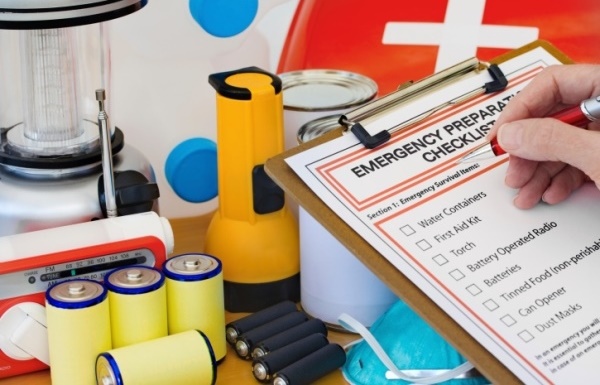Extreme weather events can be scary, but you don’t have to feel powerless. Prepare yourself, your family, and your home before the storms come with these helpful tips. Follow these steps to learn how to prepare for hurricane season:
1. Determine Your Risk.
While the brunt of a hurricane’s force often strikes coastal areas, its effects can reach hundreds of miles inland. Using the National Oceanic and Atmospheric Administration’s Interactive Flood Information Map, homeowners can identify the different flooding risks in their community to help determine how to best protect their properties.
2. Build A Disaster Kit And Keep It Fresh.
A good disaster kit includes: a three-day supply of food and water, cash, blankets, first-aid supplies, medications, toiletries, batteries and a radio. Remember to check for expiration dates at least two times per year.
3. Create An Evacuation Plan.
Once you know if your home is in a hurricane zone, the next step is to identify a safe place that isn’t—maybe the home of a friend or a family member. It doesn’t have to be hours away as long as it’s out of the danger zone. You can you use the I.I.I’s (Insurance Information Institute) Know Your Plan™ app to map out the best route to reach your safe location. Don’t forget to include your pets in your plans. Also, make sure your gas tank is full in case you have to hit the road.
4. Draft A Family Communications Plan.
When preparing for a hurricane, discuss with your household how to contact each other in the event that you become separated during an emergency. Also, think about how to get in touch with relatives and friends to let them know you’re all right.
5. Shore Up Your Home’s Defenses.
Clean out your gutters and find a place to store lawn furniture and other outdoor items, which can get dangerous in high winds. Trim any loose or dangling tree branches near your house, and make sure your yard or the exterior of your home has efficient drainage.
6. Identify Reliable Sources For Disaster Updates.
Figure out which news sources you can trust for reliable updates. The National Weather Service is a good place to start. Also, research how your local state agencies update the public on evacuations, emergency support and road closures.
7. Take Inventory.
Photograph and document your possessions in as much detail as you can. It can speed up the claim-filing process down the road, should you need to do it. The I.I.I. (Insurance Information Institute) offers the Know Your Stuff® Home Inventory app that can help you keep an up-to-date digital record of your possessions.
8. Make Copies.
Photocopy and scan your inventory, disaster plan, contact information, birth certificate, passport and other important documents. Make copies and seal them in a waterproof container along with your disaster kit.
9. Don’t Overlook The Little Things.
How will your child stay entertained during an emergency or a blackout? Do you wear contact lenses? Do you have a dog that needs kibble or a cat that needs insulin? Riding out a storm, or even anticipating one, will be a lot less nerve-wracking if you’re careful to cover all your needs. Make sure your phones are charged, you have a place to move your vehicles to higher ground, and remove items hanging on walls.
10. Review Your Insurance Policy.
Is your homeowners or renters insurance up-to-date? Your policy should be designed to meet your unique needs.
11. Figure Out If You Need Flood Insurance.
If you own a property in a special flood hazard area (SFHA) and have a mortgage, federal law requires that you have flood insurance. Even if it’s not a requirement in your area, your home may still be at risk. Under the NFIP (National Flood Insurance Program), insurance companies issue flood insurance and the federal government administers the program. If you need flood insurance or just want to get some more details, go to geico.com or call 1-800-841-2964.
Visit GEICO’s Catastrophe Center for more information on how to protect your family this hurricane season. GEICO policyholders who need to report a loss can log onto GEICO’s Claims Center or call 1-800-841-3000 anytime, day or night.
When storms are imminent, use our interactive Hurricane Preparedness Checklist to know what to do before, during and after a storm.
